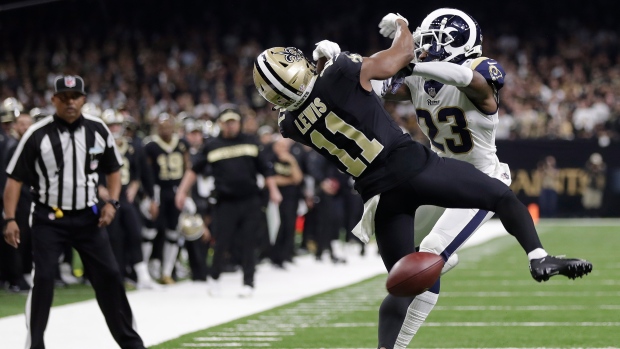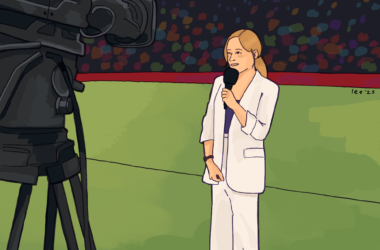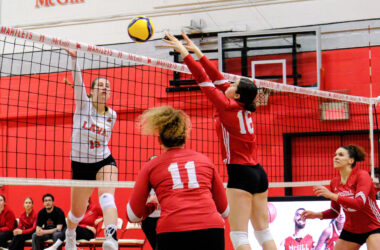The future of video review in the NFL changed at 8:59 p.m. on Jan. 20, 2019. The New Orleans Saints held the ball on the 13-yard line with 1:48 left in the game and a chance to book their ticket to the Super Bowl. Veteran quarterback Drew Brees, the all-time passing yard leader, dropped back and threw a dart toward Tommylee Lewis. Before the ball got to him, Lewis was hit by Nickell Robey-Coleman, an obvious penalty. New Orleans was awarded an automatic first down and ran out the clock to kick the game-winning field goal as time expired. Or, at least that is what should have happened. Instead, the officials did not call a foul, and the Saints were robbed of their 2019 Super Bowl dreams. This single play exposed a glaring weakness in NFL officiating: The need for video assistance in interpretive penalties.
In March 2019, instant replay began to cover pass interference on a one-year trial basis. In theory, fouls should now be called correctly as a result, but this has not proven to be the case. Fans and coaches alike are more frustrated and confused about what constitutes a “clear and obvious” foul. In fact, only 17.5 per cent of coaches’ challenges, with regards to pass interferences, have actually resulted in a decision being overturned.
This is not a problem unique to the NFL. The NBA is now allowing coaches to challenge some of the officials’ decisions once per game. Again, these challenges have a low success rate and have left coaches frustrated. While it was amusing to watch Doc Rivers lose his mind when referees upheld a ridiculous offensive foul on Lou Williams in the Nov. 6, 2019 matchup against the Bucks, he expressed an exasperation that many people are also experiencing.
Rivers brought up an important point: Nobody, including officials, wants to be wrong. This is especially true when it comes to judgement calls. When a judgment call is checked, the officials usually stick with their original decisions because each incident could be interpreted in multiple ways.
This leaves us asking whether leagues should still offer video assistance to their officials. The short answer is yes. The problem does not lie with the technology itself, but rather the lack of transparency in its use. While the flow of the game and, sometimes, celebrations are interrupted, spectators and athletes are often left in the dark as the officials deliberate. As a result, when the decision is unexpected, the crowd, teams, and social media blow up. This is a frequent occurrence with video-assisted refereeing in European soccer as well, especially in the Premier League.
Leagues around the world could learn from television match officials in rugby, which has been a tremendous success. Viewers at home and spectators who have purchased the ref link technology can listen to the discussions between the head official and the television match official. Fans and referees get to watch the exact same replays, and there is no lengthy process because officials do not waste time overanalyzing the incident on a screen off-field, but rather observe the big screen visible to all in attendance. In effect, the public is guided through the officials’ thought process, which humanizes these often-vilified individuals and minimizes the impact of interruptions by keeping everyone engaged.
Officials are people, and people make mistakes. Professional leagues across sports can, and should, use technological assistance to their benefit. If leagues make the communication between officials available for everyone to listen to, not only will the public be kept informed, but it could also prevent officials from being berated publicly after an unpopular decision. They should embrace the technology and maximize the audience’s experience.








